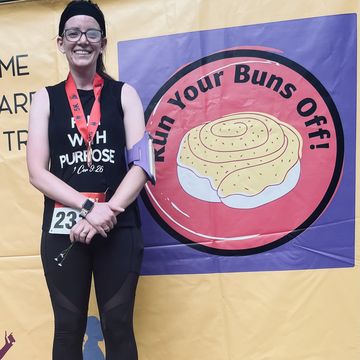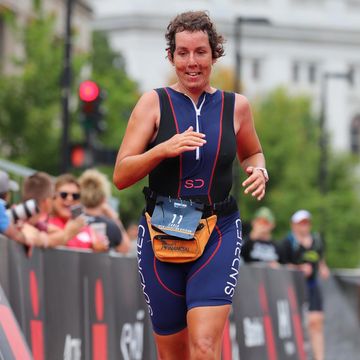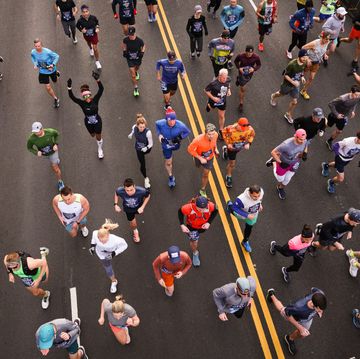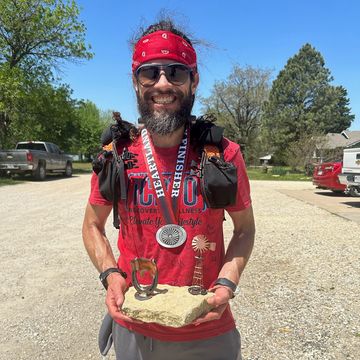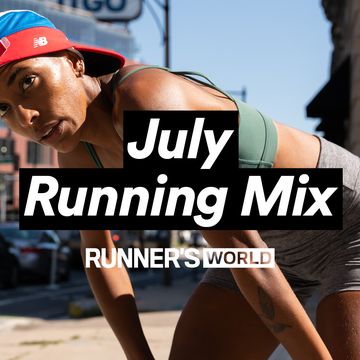In a time where running safety measures differ based on demographic and running clubs in many areas can be largely white, the story of Black NCAA athletes can feel similar: We’ve long understood that in this sport, just like in many other aspects of our lives, our experiences will be different from our non-Black peers’ experiences.
After my own college cross-country coach told me that she didn’t see color because she was “race-blind,” it further reinforced the idea that institutional racism can exist even when it comes to athletics. This kept me from fully bonding with my team, which I still sometimes struggle with as a 27-year-old Black woman.
My story is familiar to other Black student athletes, especially in college track and field and cross country.
More From Runner's World

According to the NCAA’s own database on demographics, Black men have made up just 14 to 18 percent of all NCAA head coaching positions for indoor and outdoor track from 2012 to 2022 (and Black women represent an even smaller percentage). However, Black women made up just 20 percent of those teams and Black men represented about 22 percent of their team during this same 10 year time frame.
Not all white coaches are like mine. Vin Lananna, currently the director of track and field and cross country at the University of Virginia, explained his coaching style as an academic and athletic balance where learning in all aspects is important to him. For the last 30 years, he’s served as a coach for powerhouse programs like Stanford and Oregon, along with coaching multiple U.S. Olympic and world championship teams.
“The sport is very different from other sports, there’s kind of a low entry point in terms of finances, geographic locations, etc.,” Lananna says. As an assistant coach at Dartmouth College, his first big coaching position, he mostly recruited nationally for a program that also had high academic requirements, as did Stanford. But Oregon, with its reputation as a school that develops future U.S. champions, had a more global approach.
Aside from making an effort to include and invest in athletes from different areas, Lananna detailed that all coaches can be better support systems to Black track and field runners by actively working to create an environment where students can feel comfortable. For example, while coaching at Stanford from 1992 to 2003, he was backed by five assistant coaches, three of whom were people of color. During his time as head coach at Oregon from 2005-2012, there were two women on his team of five, and now at University of Virginia he works closely with a diverse staff.
“Kids are more comfortable when they are in an environment where they feel like they have someone to relate to,” he says, adding that the collegiate running experience is elevated when there’s a more diverse coaching staff.
His friend and colleague Mike Holloway agreed with this sentiment. Through coaching at the University of Florida’s track and field program for nearly three decades, Holloway has learned that “practice doesn’t make perfect, it makes permanent.”
A Black coach himself, Holloway says when guiding his athletes through a multitude of sprint, distance, and field events, he keeps in mind that you’re coaching a human and not simply a performance machine.
“I coach the person, the biggest mistake you can make is trying to fit everyone into a box, I coach people based on their personalities,” Holloway says, “Also this isn’t football or basketball where everyone is on a full scholarship.”
Coaching Black athletes as a white coach goes beyond recruiting to build a multifaceted team: university coaching teams need consistent and diligent diversity training programs, too, because just as the past few years have taught us, microaggressions can happen in all walks of life.
Cheryl Donald, a licensed marriage and family therapist based in New York City, reinforced the value of Black representation and visibility within the running community. She is a founding member of The Running Sistahs Social Club, which is a bimonthly social series that helps Black women runners in the New York metropolitan area to mingle.
Donald maintains that groups for Black runners have become more important because of how unsupported folks have felt in their collegiate pursuits and into training as adults. “Coaches should value different kinds of representation on their teams, and think about what that looks like. Think about having only one person from any given demographic on your team, and how that one person could feel in the group dynamic,” she says.
Getting to know your athletes beyond running is something that Lananna and Holloway both highly value, which has proven to make stronger teams for both coaches.
As a seasoned coach of the Florida Gators—Holloway has 12 NCAA Division I National Championships and has coached numerous Olympic medalists—he thinks that white coaches can support Black athletes, and athletes of varying backgrounds, by not only opening their ears to listen but also opening your eyes to watch. Body language is a very clear indicator of how comfortable an athlete is with their teammates and coaches, especially because practicing a sport involves a significant amount of personal interaction.
These are all types of questions that are important to consider when building an inclusive team:
- Who never uses the shampoo in the locker room because it might not work with their hair?
- Which students have difficulty laughing at specific jokes?
- Who comes into athletic programs already having known the majority of the team from high school track?
What do certain athletes value over others? Troy Engle agreed that students are more than points, they’re people. He ran at Amherst College, a Division III program, and later coached at Washington University in St. Louis, Occidental College, and on the U.S. Paralympic team.
He pointed out that the age of the athletes that coaches work with stays consistent—between 18 and their early 20s—but the longer one serves as an athletics coach, the farther they get from being able to relate closely with them; therefore it becomes increasingly more important to stay up to date on student life (aside from running) and evolving diversity training courses. For example, taking the time to remember a student’s pronouns is incredibly valuable, especially because the LGBTQ+ population in the United States has been increasing across all races year over year since 2012.
Engle, a longtime coach and father of a Black daughter, emphasizes that white coaches often can’t support their non-white athletes because it’s about life experience. “If a person lives 20-plus years without exposure to certain people, they’re not going to be able to relate to them,” he says “There are too many coaches who either haven’t had the exposure, or don't admit that they need the exposure.”
Furthermore, Kyle Mason, a Black coach at Cate School in California, began running track at another predominantly-white prep school (Blair Academy) when he was 15 years old and later moved onto coaching so that more students could have the experience of working with a coach who wouldn’t hurt them. Much like Lananna and Holloway, Mason notes that the way coaches are trained needs to fundamentally change:
“There’s a very strong inclination to treat everyone the same because ‘it’s a team,’ which isn’t always the right answer, especially if you’re going to be learning-centered,” Mason says. “You can’t treat everyone the same, but if you don’t have the skills to know that people have different needs, then you’re going to default to letting some people down while helping others a lot.”
While 14 percent more white NCAA athletes reported feeling a sense of belonging at their college compared to Black athletes in 2020 according to the NCAA’s research program, there’s still both covert and overt discrimination that happens in the sport of running as a whole.
Holloway explained it best: “We have to prepare for the moment when the athletes eventually hang up the spikes, leading with that in mind instead of thinking of these kids as point-scoring machines is crucial to developing a healthy program”.



